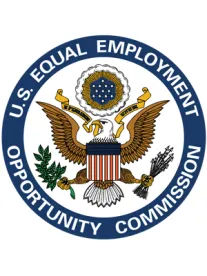On November 20, 2019, the EEOC held a public hearing at its headquarters in Washington, DC, regarding proposed changes to the Employer Information Report (“EEO-1”). These proposed changes include “not seeking to renew Component 2 of EEO-1,” which required employers with over 100 employees to report employee pay and hours worked information.
The purpose of the hearing was to gather information on the proposed changes and to assess the benefits and burdens of using the EEO-1 to collect Component 2 data. During the hearing, the Commission’s members emphasized the importance of tackling pay disparity, but questioned whether collecting Component 2 pay data is the best way to address the problem.
The Commission heard testimony from the following panelists: Lynn Clements from Berkshire Associates, Michael Eastman from the Center for Workplace Compliance, Jocelyn Frye from the Center for American Progress, Joshua Mitchell from Welch Consulting, Jessica Stender from Equal Rights Advocates, and Betsey Stevenson from the Gerald R. Ford of Public Policy at the University of Michigan.
Clements and Eastman, both of whom have helped employers prepare Component 2 pay data, spoke of the burdens their clients faced in assembling the Component 2 data. Mitchell, likewise, discussed the burden Component 2 places on employers and its lack of utility in targeting employers engaged in discriminatory pay practices. By comparison, Frye, Stevenson and Stender spoke in support of continuing to use the EEO-1 to collect Component 2 data and disagreed with statements that had been made regarding the burdens of collecting the required pay data. Stevenson and Stender criticized the prospect of the Commission discontinuing its use of the EEO-1 to collect Component 2 data before analyzing the 2017 and 2018 data it has already received.
In her closing statement, Chair Dhillon stated that, in making its decision regarding the proposal, the Commission would take into account the panelists’ testimony and public comments. Commissioner Lipnic’s final comments highlighted the Commission’s need to consider how to best use its scarce resources to combat the wage gap. She also discussed how, in analyzing the efficacy of Component 2, the Commission could use the 2017 and 2018 Component 2 data it has already collected from employers. Finally, Commissioner Burrows’ closing statement focused on the fact that the Commission’s work in rooting out pay discrimination has been hampered by a lack of information and that pay gaps continue to persist.
We will continue to monitor developments on the EEO-1 front and report them here.




 />i
/>i

